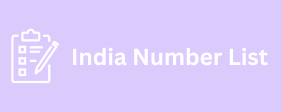Now that you know why your blog exists and what purpose it serves, you need to identify your target audience. Without a target demographic, your blog content may be disjointed and not serve your intended purpose.
All blog posts should be targeted to a specific audience. This could be a pre-defined buyer persona or one of your market niches. It’s up to you to decide how to target each post. Perhaps different categories will serve different audience segments.
When defining your target audience, consider the following points:
- Pain points
- Problems
- Gaps in knowledge
- Where your audience consumes country wise email marketing list content (i.e. blogs, videos, preferred social media channels, etc.)
- The most valuable content format based on your audience, such as a guide, technical article, review, news.
- What are some signs that your content is resonating with your audience, such as comments, purchases, email signups, ROI?
How often will you publish content?
You should determine how often you will publish new content to ensure consistency and to let your users know when to expect new content from you. When considering this, make sure that you can stick to this schedule and still provide readers with high-quality content.
When considering your publishing frequency, also think about what format that content will be in: video, guide, whitepaper, etc. A strong content calendar will be an important part of your success.
You also need to analyze your resources, including budget and staff, to understand how often you can publish content.
Create a blog topic development plan
Who will create new topics for the blog? How will you keep track of new ideas that come from other departments and management?
One good place to find ideas for new topics is customer support. If the team encounters recurring questions about a product or service, or hears about an anecdotal problem, this is an opportunity to clarify the situation and empower your customers to find answers themselves.
You also need to keep an eye on what your competitors are doing and do competitive keyword research. But understand that you can’t just horizon telescope data promises publish the same blogs as your competitors. Unique content is very important and will help you attract new customers. But sometimes you can look at your competitors for inspiration.
Set goals and KPIs for your blog
How do you know if your blogging strategy is working? Before you get started, you need to define what success looks like for your blog so you can recognize it when you start looking at the metrics.
These goals can increase gradually over time, or you can review them annually to look for opportunities for continuous growth.
Start creating content
You can’t stay in the planning stage forever. europe email At some point, you need to move into strategy execution. Start publishing content based on the content calendar you created. Start taking notes on what’s working well in your content creation and what needs work.
When creating new content, make sure you also share it on other marketing channels. Social media is a great place to distribute and re-share this content. You may also want to consider submitting content to major industry publications to get a backlink.
If creating a corporate blogging strategy seems like an overwhelming task or you don’t know where to start, sign up for a free consultation with New Light Digital. Our team of experts is ready to help you develop a strategy that will work for both SEO and customer acquisition.
